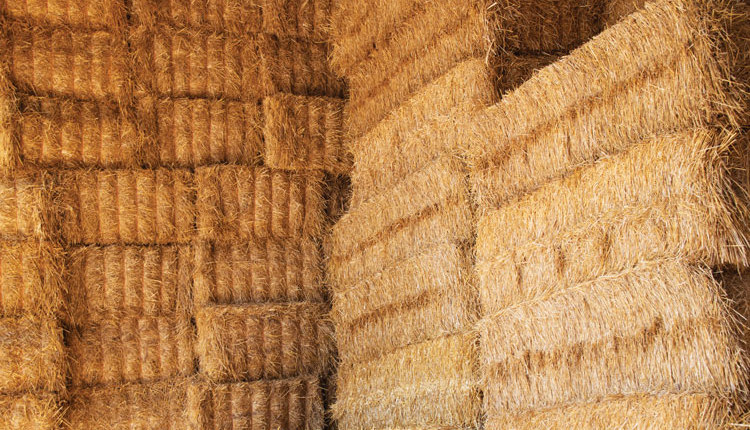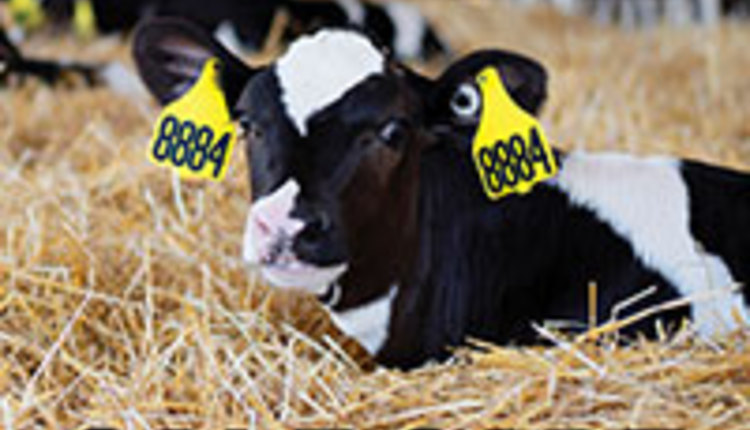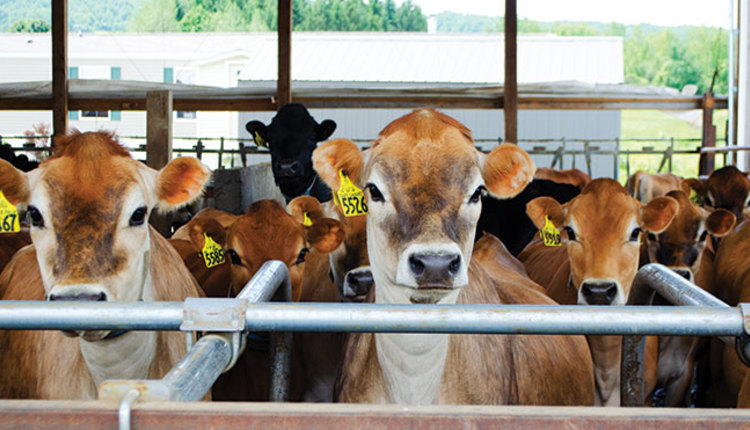
When I stop at a farm for an assessment of the heifer program, the first thing I usually do is ask three questions:
- For every 100 (or 10, depending on farm size) cows you have, how many heifers do you have? Count newborns up to springers.
- What is the average and range of age at first calving?
- How many hours a day do heifers have feed in front of them?
My questions stem from a whole farm economic assessment I was involved in a few years ago. It was determined that the three biggest areas that affect the economics of the heifer enterprise on a Pennsylvania dairy farm were herd culling rate, age at first calving, and heifer feed costs.
The right amount
In general, herd culling rates have gone down a bit in the U.S. in the past few years. This is a good thing as it means we are getting more days of productive life from our animals. It’s a result of better management and attention to well-being.
We often have better reproduction due to improved heat detection, computerized animal monitoring, and estrus synchronization. The result is less reproductive culling.
Most farms have had an emphasis on housing, stall design, and floor and stall surfaces. In addition, we have learned a lot about maintaining better hoof care, resulting in less culling for feet and leg problems.
In the big picture, there are fewer health, mastitis, and metabolic issues on farms across the U.S. This begins with better colostrum management, animal vaccinations, cleanliness, nutrition, and more. So, we can cull fewer old cows and improve average milk production by not milking as many young cows. We can reduce the number of replacements needed per year to maintain herd size.
From looking at the amount of beef semen used on dairy cows and the numbers of dairy-beef calves being fed in feedlots, we know many farms are already doing this. So, when I stop at a farm, I want to know if they are raising 60%, 70%, or 80% heifers compared to the number of cows.
Whatever the percentage is, it is rarely 100% as it was 10 to 20 years ago. However, it will vary from farm to farm and may be higher if a farm is planning for or going through an expansion or has a viable heifer market. We can estimate what was done in the past by looking at the percent of 2-year-olds in the milking herd now, but analyzing replacement numbers gives us a better long-term idea of what is happening.
Efficient reproduction
The next question to ask is about age at first calving. For Holsteins, I want to see the majority of calvings at 23 months and most of the rest at 22 and 24 months. There’s likely few calvings at 21 months and a few at 25.
If you have many calvings at 21 months or before, you are likely violating the heifer growth rate maximum of 1.9 pounds per day before puberty. That number is well established; mammary development will be impaired and milk production potential will be diminished if growth rates get over that number. I also do not want to see any calvings at 26 months as many studies have shown these heifers are costing the farm an extra $350 or more to get them to calving. Their chances of a difficult calving and early culling goes up, too.
For Jerseys, the desired average is around 22 months, and every benchmark above is reduced by one month. The extra cost of raising Jersey heifers beyond 25 months may be slightly less due to less feed eaten, but that is about the only difference.
Many U.S. dairy farms are at or near these goals. So, it is not often that this point is being ignored, and this is good. It is especially important to know the numbers on the fringes of your average, as they cost money due to late calvings.
Different feed needs
Now for the last question: How many hours a day do heifers have feed in front of them? My number one point here is that as far as nutrition is concerned, a heifer is not a cow. Heifers have different and much lower nutrient requirements than lactating cows.
After 6 to 8 months of age, heifers have a functional rumen that’s large in relation to their body size. They can maintain a population of rumen bacteria and protozoa that can digest grains and forages quite efficiently, and they do that 24 hours a day, providing nutrients to the blood and the small intestine for further digestion.
Their rumen can provide almost all of the energy and microbial protein they require. They are able to do this whether or not they have feed in front of them all the time. Because their nutrient requirements are so much less than a lactating cow, their intake or eating time is rarely a limiting factor.
In the past, we have seen much research data show that as we feed heifers and adult cows more, they must move that feed out of the rumen faster as there is only so much room in the rumen. As long as we are feeding digestible forages and feeds, the reverse is also true. We know that when heifers are fed less dry matter as a percent of body weight, the feeds (often forages) have more time in the rumen, which gives them more time to be digested by those rumen microbes.
Less dry matter intake and more rumen fermentation time means more energy is extracted from those feeds, and feed efficiency goes up. In addition, when the heifer eats less, it uses less maintenance energy to process and digest those feedstuffs, which allows more of its maintenance energy to be used for growth.
As long as the heifer has a balanced diet and is getting all the required nutrients to grow sufficiently, feeding slightly less dry matter is a good thing. Many times, the limit-fed heifer needs 10% to 15% less dry matter per day, but this all depends on what is being fed.
We also know that limit feeding has no effects on gastrointestinal (GI) tract development, feed intake after calving, milk production, or anything else after calving. The data shows that dairy heifers continually digest and absorb nutrients from the forages and feeds in the rumen, even if the heifer is fed on a limited basis and only one time a day.
The biggest challenge of heifer diet formulation in this system is that the energy value of the forage being fed to limit-fed heifers is underestimated on your forage analysis. Remember, the energy value of a forage is based on calculations using the lactating dairy cow and its estimated rate of passage of feeds through the rumen and GI tract. The limit-fed heifer doesn’t follow the normal values in this situation, so we have to look at average daily gain and body condition as the outcome for the energy going to the heifer. It works but is just not quite as scientific for the heifer as it is for the lactating cow. Keep in mind that a heifer is not a cow.










